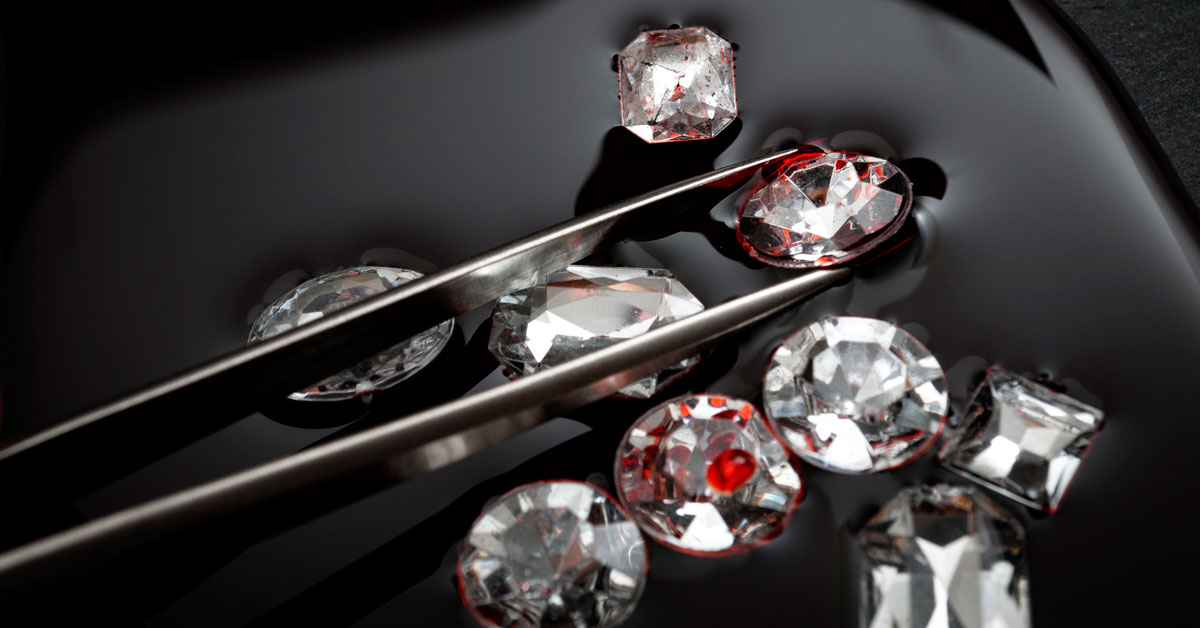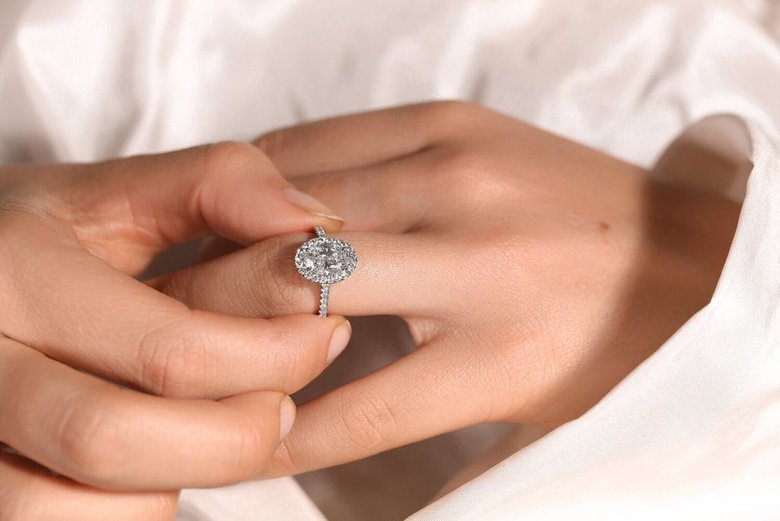Introduction
In the age-old quest for dazzling beauty and eternal love, diamonds have always been the ultimate symbol. However, with the rise of technology and innovation, a new contender has emerged in the jewelry scene – lab-created diamonds. As consumers navigate the larinth of choices, it’s essential to understand the differences between lab diamonds and real diamonds to make informed decisions. Let’s embark on a journey to uncover the sparkling truth behind these shimmering gems.
Diamonds have long been associated with eternal love, beauty, and luxury. However, the emergence of lab-grown diamonds has sparked a conversation about the differences between these man-made gems and their natural counterparts. In this article, we’ll delve into the intricacies of lab diamonds versus real diamonds to help you understand the distinctions and make an informed choice.
What are Lab Diamonds?
Lab diamonds, also known as synthetic or cultured diamonds, are created in controlled laboratory environments rather than forming naturally within the Earth’s crust over millions of years. These diamonds have the same chemical composition, crystal structure, and physical properties as natural diamonds but are produced through artificial processes.
Lab diamonds are typically grown using two methods: High Pressure High Temperature (HPHT) and Chemical Vapor Deposition (CVD). In HPHT, lab made diamonds, a diamond seed is subjected to high pressure and temperature conditions akin to those found deep within the Earth, facilitating the growth of a diamond. CVD involves the deposition of carbon atoms onto a substrate, resulting in diamond crystallization layer layer.
Characteristics of Lab Diamonds
Lab diamonds exhibit identical optical and chemical properties to natural diamonds, making them visually indistinguishable. They possess the same brilliance, fire, and durability as their mined counterparts. Additionally, lab diamonds offer environmental benefits, requiring minimal land disruption and reducing the carbon footprint associated with mining.
In terms of cost, lab diamonds are often priced lower than natural diamonds of comparable quality. This affordability stems from the streamlined production process and the absence of mining expenses. Furthermore, lab diamonds are ethically sourced, free from the controversies surrounding diamond mining practices.
Benefits of Lab Diamonds
One of the primary advantages of lab diamonds is their ethical pedigree. Unlike natural diamonds, which may be associated with conflict or bloodshed, lab-grown diamonds are produced in controlled environments with strict ethical standards. This aspect appeals to conscientious consumers seeking ethically sourced jewelry.
Moreover, lab diamonds offer unparalleled customization options, allowing buyers to select specific characteristics such as color, clarity, and carat weight. This level of personalization ensures that each diamond is tailored to the individual’s preferences, resulting in a truly unique piece of jewelry.
Furthermore, the accessibility of lab diamonds is a significant advantage. Their consistent availability and diverse range of options make them an attractive choice for consumers worldwide. Whether purchasing online or in-store, buyers have access to a vast selection of lab-grown diamonds, eliminating the constraints of geographical location or limited inventory.
Drawbacks of Lab Diamonds
Despite their numerous benefits, lab diamonds face certain drawbacks. One of the primary concerns is the perception of value. Some individuals may view lab diamonds as less valuable or prestigious than natural diamonds due to their synthetic origins. This perception can impact the resale value of lab-grown diamond jewelry.
Additionally, market perception plays a role in the acceptance of lab diamonds. While attitudes are shifting towards embracing synthetic gems, traditionalists may still prefer the authenticity and rarity of natural diamonds. Overcoming these ingrained perceptions requires education and awareness about the quality and sustainability of lab diamonds.
What are Real Diamonds?
Real diamonds, often referred to as natural or mined diamonds, are formed deep within the Earth’s mantle under intense heat and pressure over millions of years. These diamonds are brought to the surface through volcanic eruptions or geological processes, lab diamonds vs real diamonds, where they are mined and processed for various applications, including jewelry.
Characteristics of Real Diamonds
Real diamonds are renowned for their exceptional beauty and durability. They are graded based on the four Cs: cut, color, clarity, and carat weight, which determine their quality and value. The unique formation process of natural diamonds imbues them with a sense of rarity and mystique, making them highly sought after in the luxury market.
However, the environmental impact of diamond mining is a significant concern. Mining operations can cause habitat destruction, soil erosion, and pollution, leading to adverse effects on local ecosystems and communities. Additionally, the prevalence of conflict diamonds, which are mined in war zones and used to finance armed conflicts, raises ethical questions about the sourcing of natural diamonds.
Benefits of Real Diamonds
Despite these challenges, real diamonds hold intrinsic value and symbolism for many individuals. They are often associated with love, commitment, and milestone occasions such as engagements and weddings. The emotional significance attached to real diamonds transcends their monetary worth, making them cherished heirlooms passed down through generations.
Furthermore, real diamonds have historically served as a store of value and investment asset. Their rarity and enduring appeal contribute to their long-term value appreciation, offering potential returns for investors. Additionally, the prestige and tradition associated with natural diamonds further elevate their status in the luxury market.
Drawbacks of Real Diamonds
However, real diamonds are not without their drawbacks. The issue of conflict diamonds tarnishes the industry’s reputation, highlighting the dark side of diamond mining and its implications for human rights and global stability. Addressing these ethical concerns requires stringent oversight and accountability throughout the diamond supply chain.
Moreover, the environmental impact of diamond mining cannot be overlooked. From habitat destruction to water pollution, mining operations exact a toll on the environment, contributing to ecological degradation and climate change. Efforts to mitigate these impacts through sustainable mining practices and responsible sourcing are crucial for the industry’s long-term sustainability.
Lab Diamonds vs Real Diamonds: A Comparison
When comparing lab diamonds to real diamonds, several factors come into play. In terms of quality and appearance, both types of diamonds exhibit similar characteristics, with lab diamonds offering a more affordable alternative without compromising brilliance or durability. From a cost perspective, lab diamonds are often priced lower than natural diamonds of comparable quality, making them accessible to a broader range of consumers.
Ethical considerations also play a significant role in the comparison. Lab diamonds are ethically sourced and free from the controversies surrounding diamond mining, appealing to conscientious consumers seeking sustainable and socially responsible alternatives.
Conclusion: Choosing Your Sparkling Companion
As we conclude our exploration into the realm of lab diamonds versus real diamonds, it becomes evident that both possess unique allure and charm. While real diamonds boast a rich history and timeless elegance, lab diamonds offer a modern twist with ethical and customizable advantages. Ultimately, whether you opt for the natural splendor of a real diamond or the scientific marvel of a lab-created gem, the choice lies in aligning with your values, preferences, and budget. So, embrace the sparkle that resonates with your heart and embark on a journey filled with brilliance and beauty.




